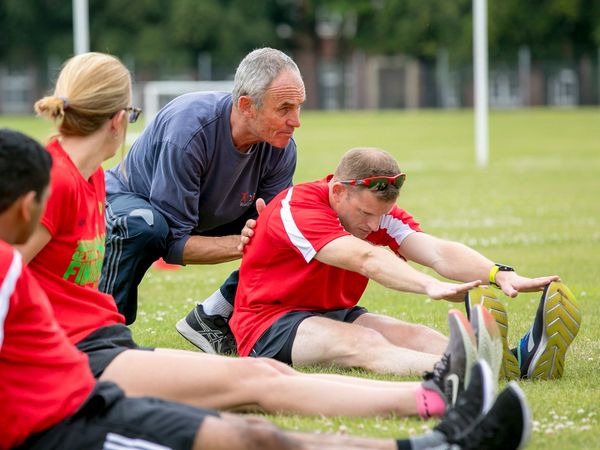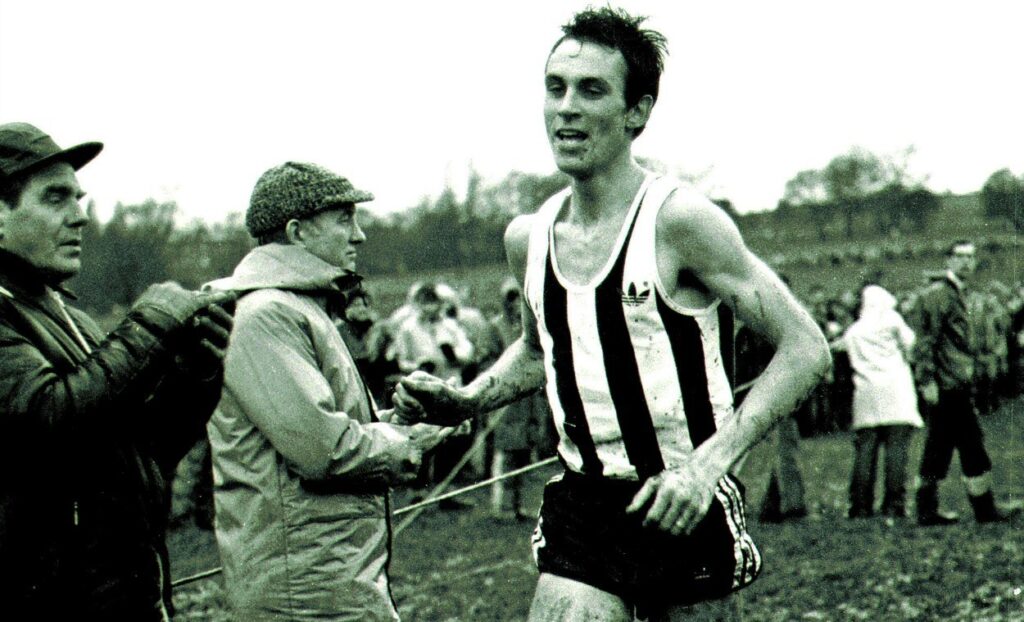Julian Goater was a top British athlete winning a gold medal with the rest of the British team at the World Cross Country Championships in 1979. He has a 5,000m PB of 13:15.59 and a 10,000m PB of 27:34.58 (which to this day is a still in the Top 10 fastest UK times ever).
In more modern times Julian is now running a coaching company in the UK called Feel Good Factors for runners and cyclists. In his book he wrote with Don Melvin The Art of Running Faster Julian talks about his methodology of periodisation.
This is the tenth article in my series about Periodisation (English spelling with an ‘s’, American spelling is traditionally with a ‘z’) and the methodologies from coaches that guided my early philosophies around periodisation of training seasons and event build ups. Have a read of last weeks article about Jon Ackland and what he recommends from in Precision Training:
Julian Goater describes periodisation as “training differently during different periods of time, in progressive steps towards full readiness to race your best on the day in question.” There doesn’t need to be a radical change from one period of training to the next, in fact keeping your keeping the basic structure of your weekly training the same will be advantagious.
During the week you will still run 4-5 key sessions:
- A long run;
- A fartlek session;
- Some sort of repetitions (either on hills or the flat); and
- At least one steady, recovery run.
Periodisation introduces a subtle change of emphasis. It involves dividing your training into six distinct phases of training. Julian Goater calls these phases:
- Active Rest (4 weeks);
- Basic Conditioning (4-6 weeks);
- Endurance Base (8-10 weeks);
- Quality Training (6-8 weeks);
- Race Preparation (4-6 weeks);
- Competition Phase
Active Rest Phase
This is a break from last seasons training and racing. Goater recommends that you stay active during this phase to avoid turning into a blob. Keep training unstructured without putting any pressure on yourself training wise.
Basic Conditioning Phase
The basic conditioning phase builds your overall strength and makes you more resilient. This is an opportunity to develop your weaknesses and also to progressively build your mileage up.
Endurance Base Phase
Within this phase you will continue to build your mileage to a very, high level. This level is relative to what you’ve done in the past. Goater also recommends that you don’t plod and incorporate a mix of intensities within these runs.
During the first three phases, you shouldn’t be desperately seeking top fitness but more letting the fitness come to you. The point of these phases is that you are getting fit enough to train hard.
Quality Training Phase
Within this phase of training, your intensity will be more intense than any other phase of training (whether hill reps, track work or fartleks). This is where training gets specific (after the good preparation you’ve already put in).
Here your target race(s) will assist determine the style of session and the pace involved. The shorter and faster your race the shorter and faster your repetitions will be, and there will also be more rest to ensure you can maintain the speed in the coming reps. Conversely, the longer your race is, the longer your repetitions will be, and you won’t be holding as fast a pace, with less requirement to have longer Rest Intervals (RI).
Race Preparation Phase
The Quality Training Phase with its intensity and maintaining a highish mileage will make you fit, but it won’t make you ready to race. With the fatigue of so much training you can’t race at your best. This phase is designed to get your ready to race.
You will still train intensely, to maintain your leg speed and ability to run whilst out of breath. But you can also practise tactics, pace judgement, and changes of pace. Mileage will be reduced in this phase so that you are fresh, fit and fast come the last phase of the training cycle.
Competition Phase
The dilemma of this phase is to stay in top condition without making yourself too tired to race at your absolute best.
Summary
Goater’s principles of periodisation take you through a journey of preparing to train, preparing to train fast, before training fast and cutting back on the duration/distance as your prepare to race before finally you get to race, race at your peak performance.
Any runner can tell you that the sport isn’t just about churning out miles day in and day out. Runners have a passion, dedication, and desire to go faster, longer, and farther. Now, The Art of Running Faster provides you with a new approach to running, achieving your goals and setting your personal best.
Whether you’re old or young, new to the sport or an experienced marathoner, this guide will change how you run and the results you achieve. The Art of Running Faster challenges the stereotypes, removes the doubts and erases the self-imposed limitations by prescribing not only what to do but also how to do it. Inside, you will learn how to
•overcome the obstacles that prevent you from running faster, more comfortably, and with greater focus;
•rethink conventional training methods, listen to your body, and challenge traditional running ‘norms’;
•customize your training program to emphasize the development of speed, strength, and stamina;
•shift gears, reach that next level of performance, and blow past the competition.
In this one-of-a-kind guide, former world-class runner Julian Goater shares his experiences, insights and advice for better, more efficient and faster running.
Much more than training tips and motivational stories, The Art of Running Faster is your guide to improved technique and optimal performance. Let Julian Goater show you a new way to run faster, farther and longer.

